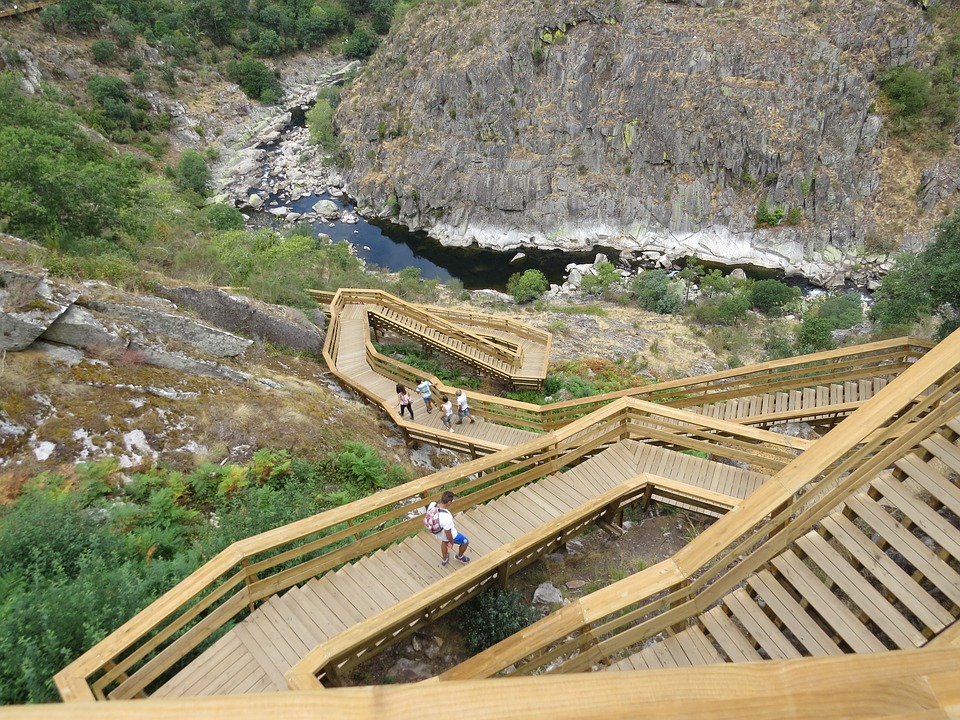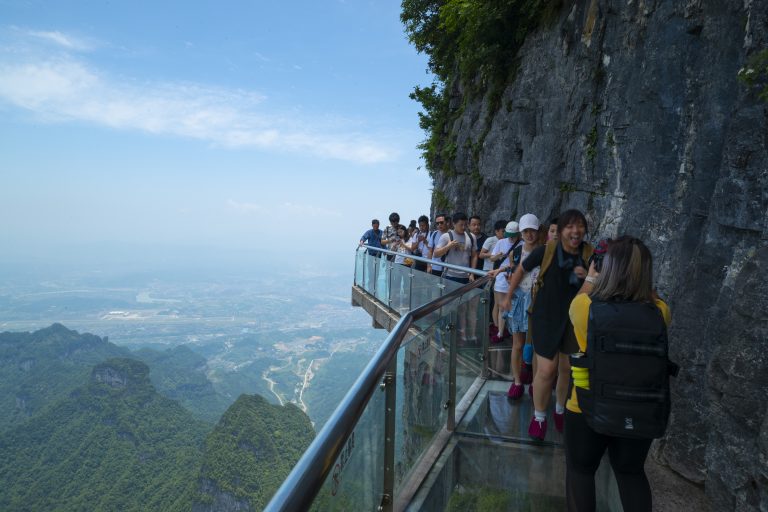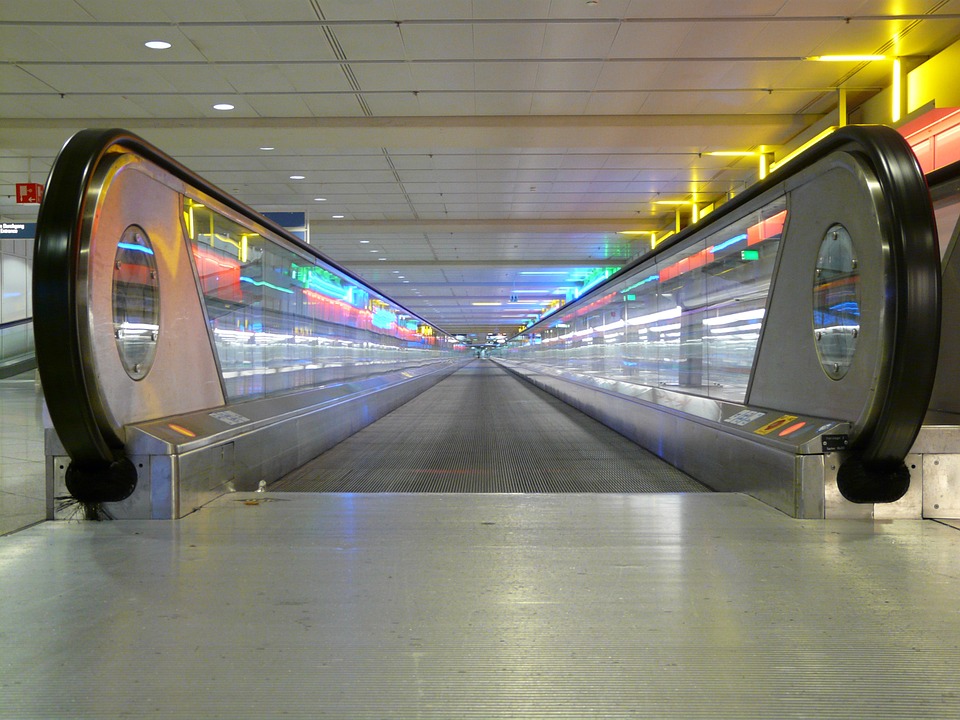Walkway
Contents |
[edit] Introduction
In general terms, a walkway is a clearly demarcated trail or path for walking. It can be paved, unpaved or constructed from wood or other materials, depending on the demands of the topography and terrain.
NB According to the HMRC internal manual, “VAT Relief for Disabled People Manual” (VRDP36000 - Walkways) a walkway is “a covered path providing shelter from the elements; or a covered bridge above the ground linking buildings and providing shelter from the elements.”, however, generally a walkway need not be covered.
[edit] Ground level walkways
When constructed at ground level, walkways are sometimes used to create both circulation routes and boundaries for pedestrians. When used by equipment, wide walkways can serve as paths to avoid damage that could be caused to surrounding grounds.
Walkways may be provided as places of relaxation for walkers in gardens, parks or other outdoor environments. They may also be provided - or created by the footfall of previous walkers - sometimes for safety purposes (see also: Desire line).
[edit] Raised walkways
A raised walkway (sometimes referred to as a skyway or skybridge) is an architectural element that gives people access between buildings or along designated routes. This type of raised walkway may be covered to protect the users from the elements.
Raised walkways can be installed on roofs to provide access to areas that would otherwise be inaccessible. This type of walkway may be called a catwalk, which is: ‘An internal or external walkway above the surrounding area that provides higher level access.’ Ref https://www.rics.org/uk/upholding-professional-standards/sector-standards/real-estate/rics-property-measurement-2nd-edition/
[edit] Tourist walkways
In certain natural environments, raised walkways are sometimes built to provide safe access across beaches (these may be called boardwalks) or through forests (these may be called canopy walkways). They may also serve as tourist attractions for a form of trekking adventure (such as the Coiling Dragon glass walkway path in China).
London’s Jubilee Walkway opened in 1977. This designated walking route was first developed to commemorate the 25th anniversary of the accession of Queen Elizabeth II. It is 15 miles long and incorporates five separate loops.
[edit] Moving walkways
Moving walkways are a form of transport also referred to as people movers, moving pavements, moving sidewalks, travelator and so on. A moving walkway generally transports people horizontally rather than vertically, although there are inclined moving walkways that have been designed to move people and their belongings (such as suitcases, luggage carts, shopping trolleys, mobility devices and so on) vertically.
Users have the option of staying still or walking independently as the walkway moves along. Most moving walkways travel at a speed that is slower than a standard walking pace but there are high speed walkways as well.
Moving walkways are sometimes found in large facilities that accommodate many people (such as airports, museums, zoos and theme parks) or places where accessibility support is a priority (such as hospitals).
[edit] Walkways in the US
In the US, the term walkway may describe engineered materials or structures that are used to provide paths or tracks. It may also refer to stairs, ramps, passageways and other structures that are associated with the use of a trail.
Walkway is not necessarily synonymous with sidewalk (referred to as a pavement in the UK). Typically used by pedestrians, a sidewalk generally runs parallel to, and on either side of a road. It provides an area that is separated from, and so protected from vehicular traffic.
[edit] Related articles on Designing Buildings
- Arcade.
- Catwalk.
- Designing for pedestrians.
- Escalator.
- Exit passageway definition.
- Pavement.
- Pedestrianised.
- Ramp.
- Safe pedestrian route.
- Speculative architecture.
[edit] External resources
Featured articles and news
RTPI leader to become new CIOB Chief Executive Officer
Dr Victoria Hills MRTPI, FICE to take over after Caroline Gumble’s departure.
Social and affordable housing, a long term plan for delivery
The “Delivering a Decade of Renewal for Social and Affordable Housing” strategy sets out future path.
A change to adoptive architecture
Effects of global weather warming on architectural detailing, material choice and human interaction.
The proposed publicly owned and backed subsidiary of Homes England, to facilitate new homes.
How big is the problem and what can we do to mitigate the effects?
Overheating guidance and tools for building designers
A number of cool guides to help with the heat.
The UK's Modern Industrial Strategy: A 10 year plan
Previous consultation criticism, current key elements and general support with some persisting reservations.
Building Safety Regulator reforms
New roles, new staff and a new fast track service pave the way for a single construction regulator.
Architectural Technologist CPDs and Communications
CIAT CPD… and how you can do it!
Cooling centres and cool spaces
Managing extreme heat in cities by directing the public to places for heat stress relief and water sources.
Winter gardens: A brief history and warm variations
Extending the season with glass in different forms and terms.
Restoring Great Yarmouth's Winter Gardens
Transforming one of the least sustainable constructions imaginable.
Construction Skills Mission Board launch sector drive
Newly formed government and industry collaboration set strategy for recruiting an additional 100,000 construction workers a year.
New Architects Code comes into effect in September 2025
ARB Architects Code of Conduct and Practice available with ongoing consultation regarding guidance.
Welsh Skills Body (Medr) launches ambitious plan
The new skills body brings together funding and regulation of tertiary education and research for the devolved nation.
Paul Gandy FCIOB announced as next CIOB President
Former Tilbury Douglas CEO takes helm.
UK Infrastructure: A 10 Year Strategy. In brief with reactions
With the National Infrastructure and Service Transformation Authority (NISTA).

























